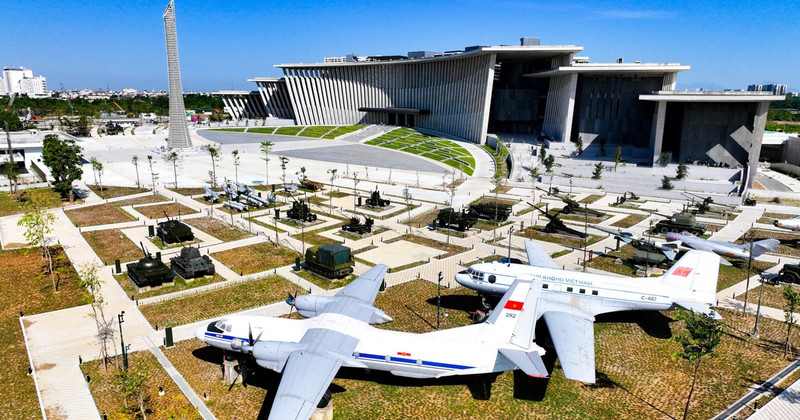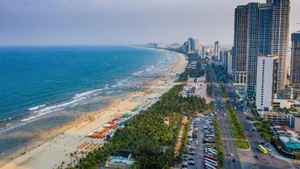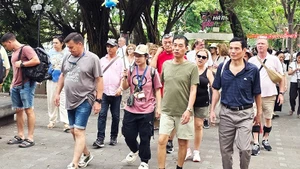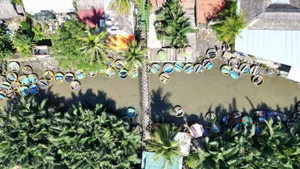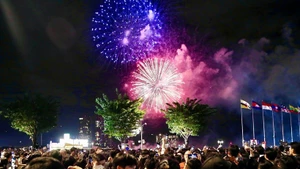 |
| The museum features a prominent building with a front yard and a 45-metre tall ‘Chien thang’ (Victory Tower), along with a main exhibition area consisting of four above-ground floors and one basement, covering a construction area of 23,198 square metres. |
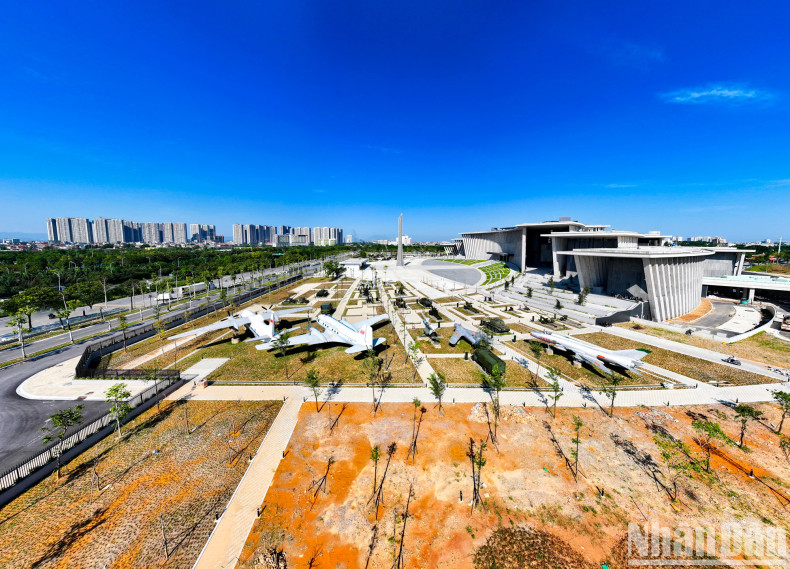 |
| On the left side, on display, are weapons and equipment used by the Vietnamese army and people during their struggle against French colonialism and American imperialism, as well as during training and combat readiness in the nation's construction and defence periods. |
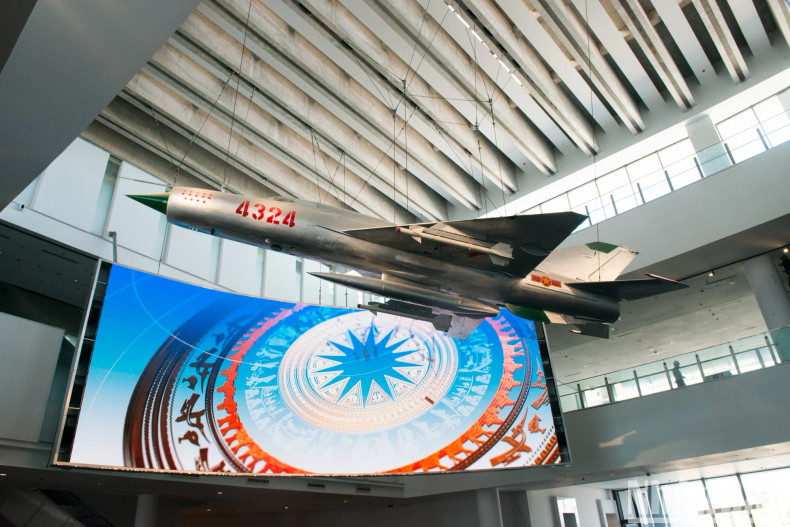 |
| The museum's main hall showcases the "Silver Swallow" MiG-21 aircraft with the identification number 4324, suspended from cables to give the impression of taking off to protect the homeland’s skies. It is complemented by a large LED screen showcasing the beauty of Vietnam and presenting content about the people's history, culture, and traditions. |
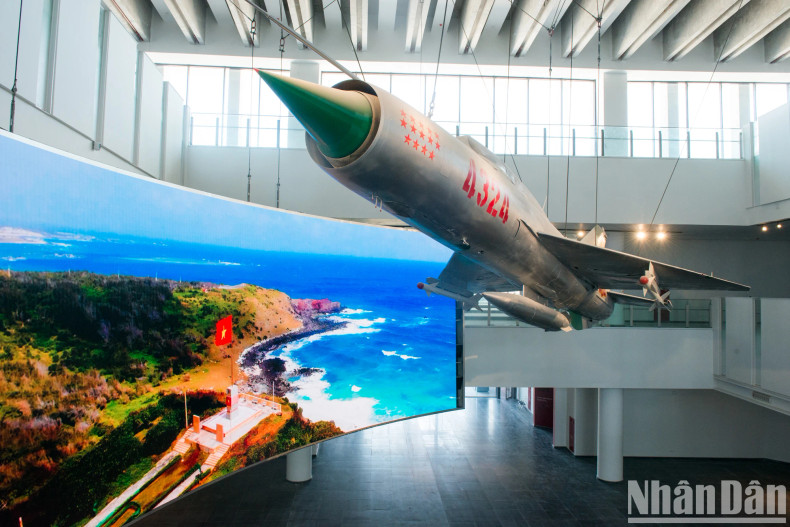 |
| During the resistance against America, nine pilots operated the MiG-21 4324, which took off 69 times, engaged the enemy 22 times, fired 16 times, and shot down 14 American planes. The body of the MiG-21 is adorned with 14 red stars, symbolising the 14 enemy aircraft that were shot down. The Prime Minister recognised this aircraft as a national treasure on January 14, 2015. |
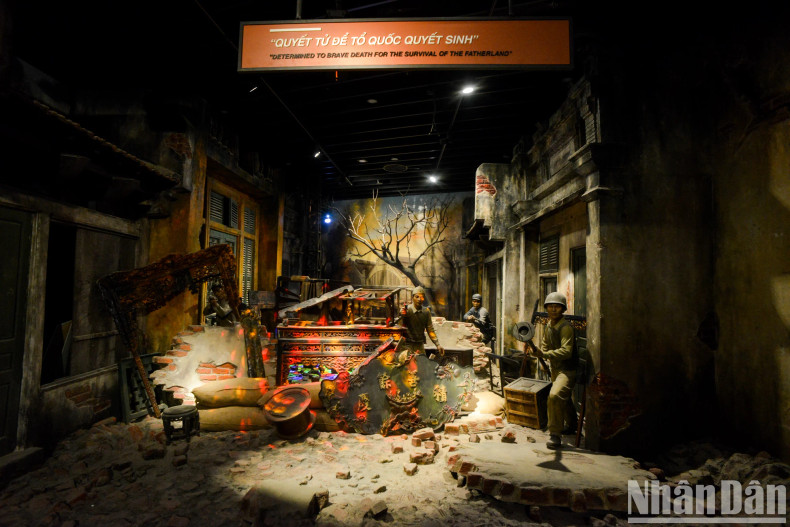 |
| In the exhibition area for the fourth theme, in addition to displaying artefacts, there are also lively dioramas in a 1:1 scale that recreate the atmosphere of Hanoi's streets during the 60-day-and-night defence of the capital. |
 |
| Six exhibition areas are dedicated to different themes, arranged chronologically. |
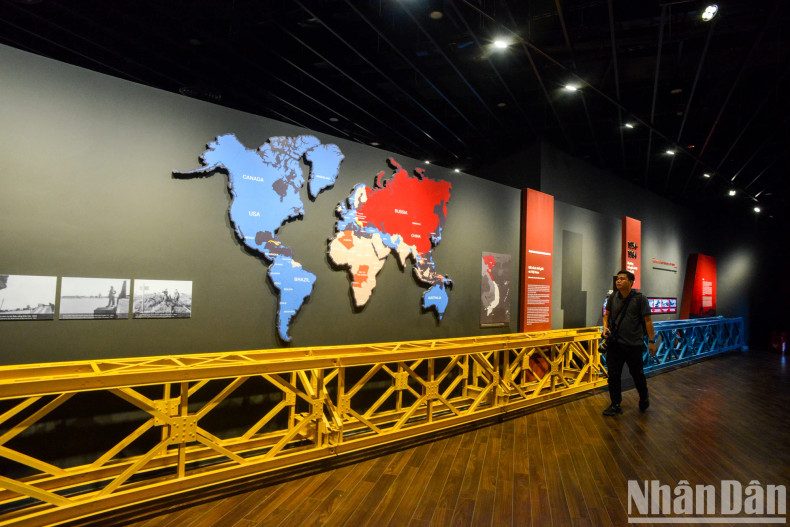 |
| The fifth theme: The resistance war against Americans from 1954 to 1975. The area begins with the iconic image of Hien Luong Bridge, symbolising the North-South divide and linked to the Vietnamese people's struggle for national liberation and reunification during the resistance against American imperialism. |
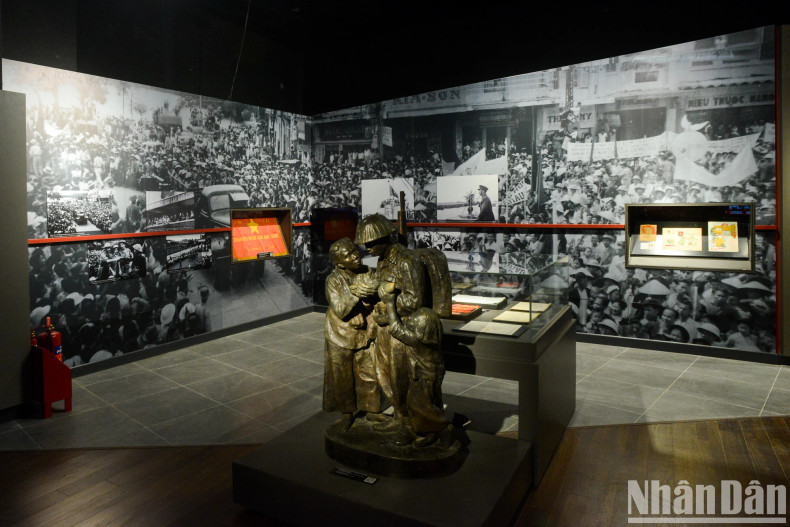 |
| A sculpture titled "Southern Soil" was created by sculptor Pham Xuan Thi in 1955. |
 |
| The artefacts highlight the themes in each part. |
 |
| The exhibition area is dedicated to the national treasure of the MiG-21 aircraft numbered 5121 and various air defence systems that contributed to the "Hanoi-Dien Bien Phu in the Air" Victory in December 1972. Lieutenant General People's Armed Forces Hero Pham Tuan piloted this MiG-21 and shot down a B-52 bomber on the night of December 27, 1972. This aircraft was responsible for shooting down five American planes, with pilots Dinh Ton and Vu Dinh Rang also having flown it. |
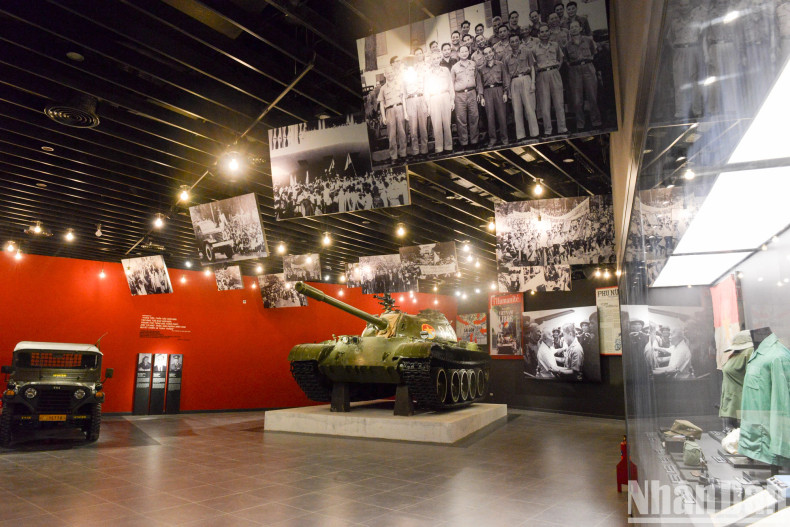 |
| During the resistance against America, the T-54B tank from Company 4, Battalion 1, Brigade 203, Army Corps 2, participated in the liberation of Hue and Da Nang before continuing to take part in the Ho Chi Minh Campaign. On April 30, 1975, this tank led the way into Saigon, destroying three enemy tanks and armoured vehicles en route to the Independence Palace. At 11 AM, tank 843 crashed into the side gate of the Independence Palace and its commander, Lieutenant Colonel Bui Quang Than, raised the national flag atop the palace. |
 |
| The legendary T-54B tank, number 843, was recognised as a national treasure in 2012. |
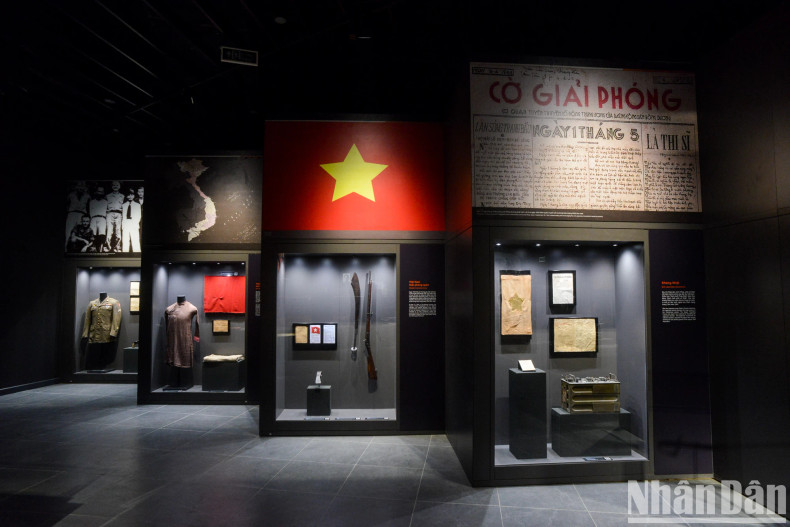 |
| The museum is not merely a facility for displaying war history but also creates a communal space for visitors to interact and experience the struggle for national independence by the heroic Vietnam People's Army. |
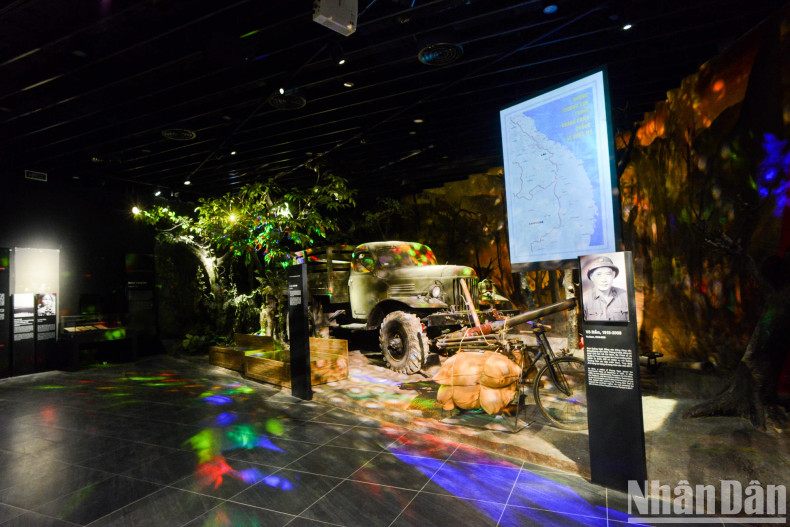 |
| The museum applies various innovative exhibition methods, incorporating 3D mapping technology, information lookup screens, media archives, automatic audio guide narration, and QR codes providing information about artefacts and images, along with over 60 video clips introducing campaigns, battles, and historical figures, offering visitors a completely new experience. |
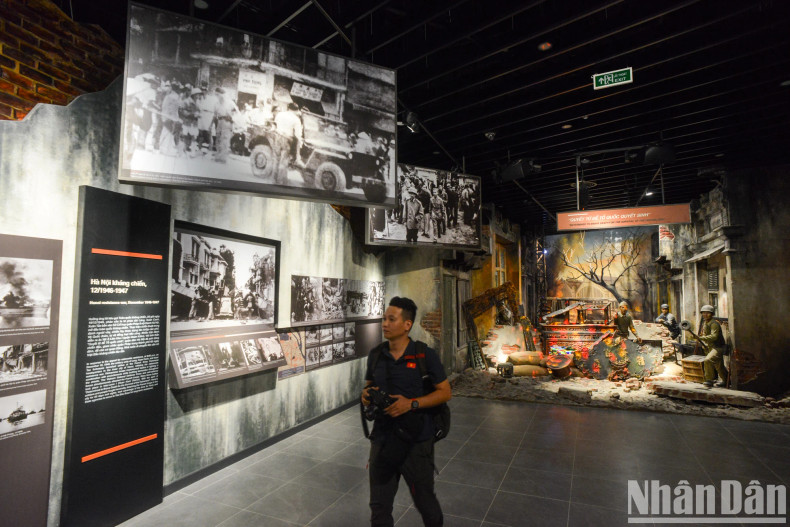 |
| The museum will open to the public on November 1, 2024. |
